#he can go sit in a cave in cheddar gorge or something
Explore tagged Tumblr posts
Text
*Kicks door down* Okay so the reason Arthur needs... has to have a property out Glastonbury way is because it's just absolutely dripping with old folklore in a manner that the Home Counties like Essex or Kent around London just plain aren't. Those are Saxon and Anglo and Norman. He needs to reject Norman every once in a while. He goes North for Cumbrian lakes and West for Somerset wassailing and even more West to sit at the bottom of a Cornish tin mine when those moods take him.
Glastonbury is weird and old and filled with things that just don't make sense at first glance, never mind the music festival next door (which I am sure Arthur attends off his face for the entire time). Half of it is a manufactured neo paganism of course but it only springs up here because of these old stories. And I think it makes Arthur all the stronger for it.
And it's Celtic, not Norman, not German, not even Roman... it's like the core part of Arthur from when he was a baby. It's his connection to his mother and his siblings. If he ever feels truly like a black sheep, all he needs do is return here and remember. Like even Bath, as wonderful and beautiful and important as it is - is still Roman.
Okay, just to rattle of odd things about the town and why I think it's kind of important when thinking and conceiving of Arthur as a character. It's a microcosm of his history and culture and what's been done to him.
So.
Glastonbury is built at the foot of a hill. The hill stands out like a sore thumb from the surrounding area as everything else is flat. The church fell during an earthquake in the 1200s (we just... don't have earthquakes strong enough to do that) but we kept the tower. A hollow beacon.
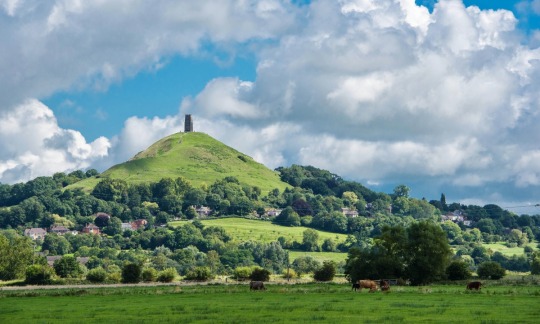

Glastonbury has several iron age lake villages nearby and the Somerset Levels were once upon a time underwater and so all you had was the Tor, poking out as an island amongst the fens, something it does even now in the fog:
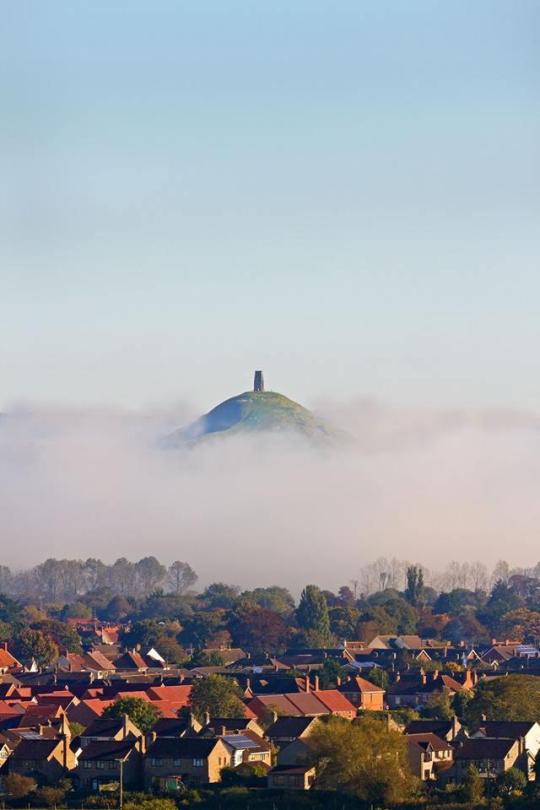
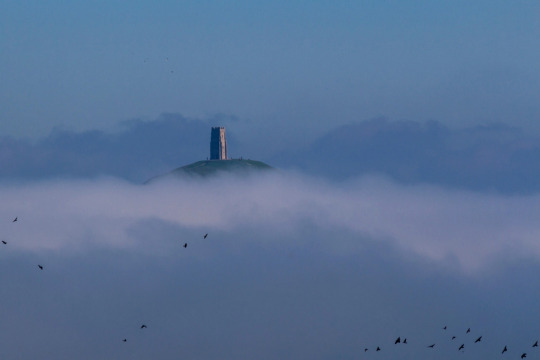
And it was the Normans who drained it and made the island join the mainland but that island is probably possibly potentially where King Arthur is buried. We think. Obviously this is contentious.🤭
So it's maybe. Probably. Most likely. Avalon itself. Isle of Apples. England's national fruit. Glastonbury has the apple festival plus the orchards in the parish and considering it was after all an island once...
Glastonbury Abbey, long before it was a ruin, argued they had his bones. Arthur's. The reformation lost them and the abbot was hung drawn and quartered by Henry VIII. How convenient. Glastonbury Abbey by some counts pre-dates the Roman attempts to enforce Christianity. So it's old as heck. Older than any Anglo-Saxon invader.
It had an English Hawthorn (aka - I shit you not - a Mayflower [cough cough Alfred cough]) tree that bloomed twice a year in the dead of winter and no-one could understand why (stories about the holy grail feature and pop up in other places in Glastonbury). Parliamentarians burned it during the Civil War (Godless and pagan as it was and as spiteful and superstitious as they were) but they used to take cuttings from the tree to send to the Royal Family each Christmas because of its winter flowers. Other cuttings were made and descendants of the tree survive in other places. There's a butt ton of folklore for Hawthorns which I don't have time for but essentially they're fairy houses and borders and don't bring the flowers into your house or you will die. It smells of rotting animals but tastes of bread and cheese. It's a fucked up plant essentially. And it had pretty flowers that we wear on May Day celebrations. Dichotomy. That's... that's Arthur.
And then there's the springs. The Chalice Well and the White Spring. One runs red. One runs white (no it runs clear but it does have chalk in it). They pop out literally across the road from each other despite having completely different sources. They've never dried up in 2,000 years.
One is blood (the Holy Grail returns) and one is milk (I think it's supposed to be the goddess Brighid's milk but I may be misremembering - it's someone's breast milk) so the spring's path and pools runs the most fantastic iron red and clear...
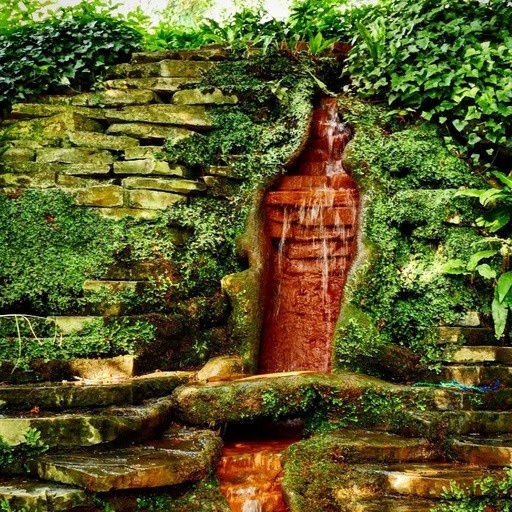
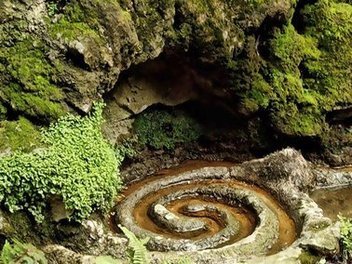
So. Not to be like... insane. But Arthur needs to have a home here. He needs to be able to come back to a place which is his connection with his mother that isn't just the standing stones and tombs of Avebury and Stonehenge and West Kennet. A place which is alive and lived in and used.
A place where the Romans couldn't touch it where the Saxons fought battles to get it where the Normans changed the landscape beyond recognition where Henry VIII sold it and hung drawn and quartered it where the Parliamentarians purged it where his namesake rests. A place where he can drink milk and blood (ooft that's a bit metal eh) and remember. It's a big bundle of changes and trauma and yet it remains all his.
And then he takes too much acid and kind of looses it during the music festival and comes back to five days later with two STIs and desperately needing a bath. #WorthIt
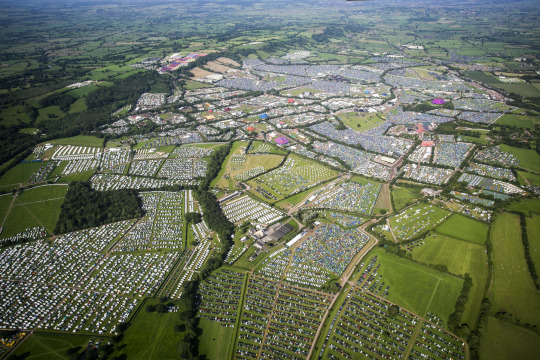
Look at this nonsense. You just know Arthur is passed out in a hedge after listening to something like Marina Diamandis' Savages on stage and having an panic attack of how close it hits home.
#hetalia#hws england#headcanon#op#i.. cannot be... succinct i'm sorry#also Somerset and/or Gloucestershire are just plain pretty it would be nice#having a manor in the cotswolds or the mendlip hills... something like Cothay Manor#one that was built even before the tudors#he can go sit in a cave in cheddar gorge or something#contemplate his life and dissociate or something
24 notes
·
View notes
Text
Misty Mendip Morning July 1st 2021
The sound of a cockerel in the distance but close enough to wake me up heralded the dawn chorus. This must have been an old bird as he could barely manage a cock a doodle before taking a breath and finishing with a doodle do. Still he persisted and any birds which hadn't woken were surely to do then. And so the din began with blackbirds whistling, finches chirping, sparrows cheeping and pigeons hooting. But loudest of them all was the wren, its voice in indirect proportion to its size. The camper van was a blaze of sound from all directions and my hope of drifting back to sleep in the semi light faded like an evaporating dream.
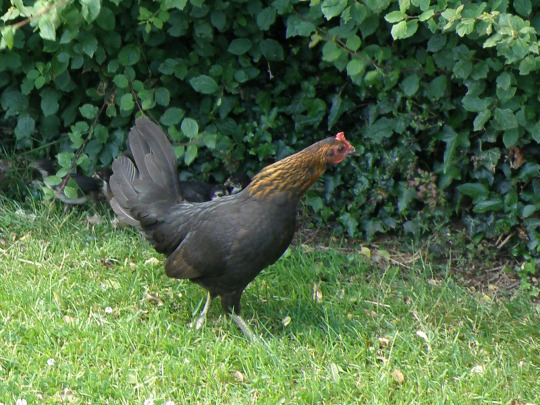
I got up and peeped through the blinds. The field just across the the old drovers road from the campsite which had been full of cattle the previous evening was now empty of cows, gone for milking. The old road which figures on the map as a trusty lane to walk was clogged with nettles, clinging vines and other fast growing greenery and was not negotiable without a stout stick to beat back the vegetation or better still a portable strimmer. There was no going that way on our planned walk for the day. It needed some farmer or council worker to clear a path. In restricted times with less people walking and plenty of early summer rain, plants shoot up to cover the footpaths and trap unwary boots with bracken and bramble. Nettles sting bare legs and skin biting flies land to feed before being slapped to the ground.

Madeleine walking the path with Priddy church in the back ground
A summer mist hung over the Mendips which was to either clear with the rising sun or hang around all day reduced to a haze and reducing too the view that could be had from Ebbor gorge over Wells where we were heading.
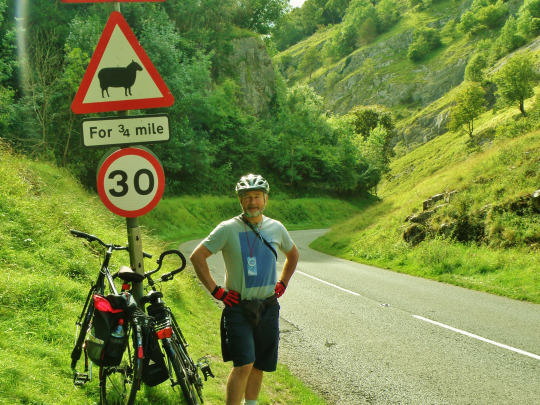
Cheddar Gorge
The campsite we were on sits above Priddy on the road from Wells to Cheddar which spectacularly serpents its way down through the gorge to get to the latter place. We had cycled that road the last time we were there twisting down the gorge past rock climbers and goats perched equally perilously on outcrops, relying on precarious hand and hoof holds; and past walkers and other tourists intent on the tea rooms and nick nack shops that line the gorge road into the town.
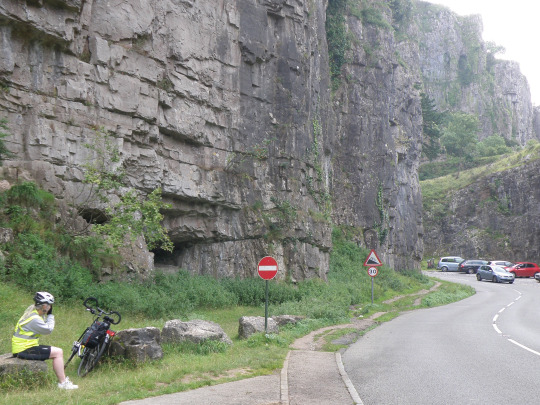
Priddy is a strung out village along that road with a triangular village green, a pub, a church and a school that local children still attend. On our walk past the school we heard them in class singing and chanting a song the teacher had set them. It seemed an eternal sound, something Hardy or Lee might have referenced in their descriptions of Wessex and Cotswolds village life from the nineteenth and early twentieth centuries. The school children seemed to be well provided with a teacher who valued culture. As well as the music, they had produced painted and laminated signs which had been posted round all the approaches to the village welcoming visitors but warning drivers to slow down. Some were more friendly than others with rainbows and polite requests. Others pointed up the dangers to cyclists by speeding drivers with a picture of a cyclist and a car coming from opposite directions and the admonition ' slow down ' with an exclamation mark to which the teacher had added a please. On the way back to the village we saw several of the children cycling slowly home at the end of their school day.

Village sign by local school children
The Mendips provide a relatively flat tract of upland once you are on top, and you can walk several miles with the contours barely undulating through fields which at that time appeared to have been allowed to revert to wild meadow, full of flowers including poppies, buttercups, red campion, dandelions, herb Robert and scabious. And in the walls separating the fields, bright yellow flowers favoured growing on the moss clinging to the stones. It couldn't have been better designed.
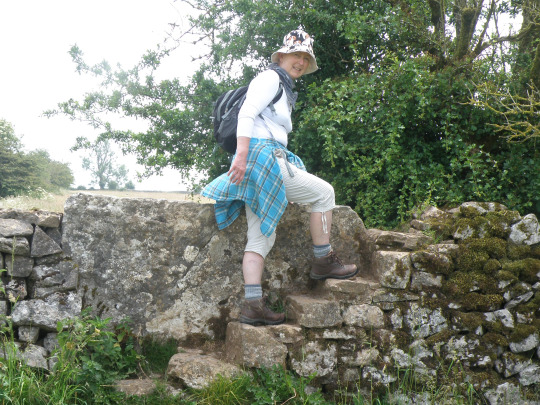
Madeleine climbing a great old Mendip stile
Our route which included parts of the West Mendip Way and Monarchs Way as well as cycle route 3 swung past farms where there appeared to be no activity, though the lanes themselves bustled with big wheeled tractors going about their business. Past fields of grazing sheep separated from us by low electric fencing we finally entered Ebbor wood and a steep decline that would have taken us to the Somerset Levels if we had continued but stopped short at Ebbor gorge and a sheer drop that put an end to the path we were on. Stacks of cliffs jutted up on all sides, coated in trees that mostly obscured the rocks but here and there where the drop was vertical and trees couldn't cling, the rock was exposed and revealed the danger waiting any stumbling pedestrian.
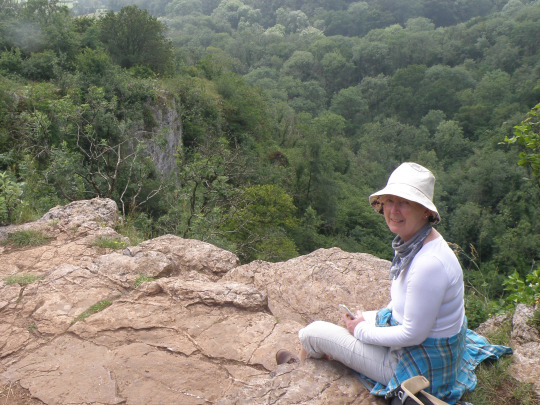
At Ebbor Gorge
We sat and ate our sandwiches, taking in the view blurred by the persistent haze that did indeed linger through the day. Our options were to descend further to the caves and maybe onto Wookey Hole or make a return north choosing a different route. The prospect of having to climb back out of the gorge was too daunting to be tempted by the reward of further visual delights. So we reversed and found a path that took us back to Priddy and to the campsite where a brew of Darjeeling and a munch of tea cake restored our flagging energy. Almost ironically the cockerel started its crowing, though at that moment the time was nowhere near sunset or dawn on that still hazy midsummer evening.
1 note
·
View note